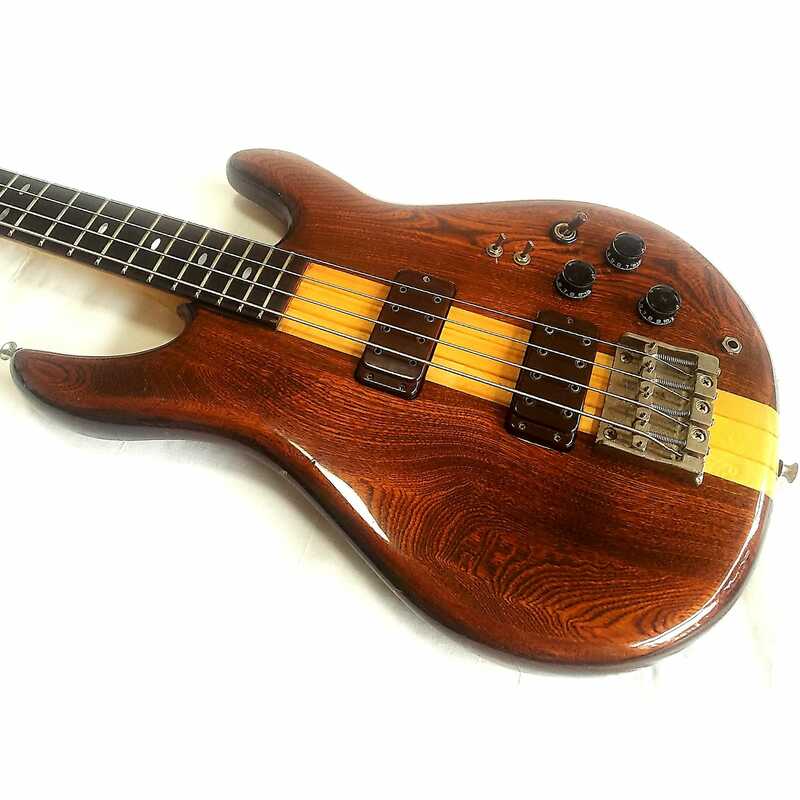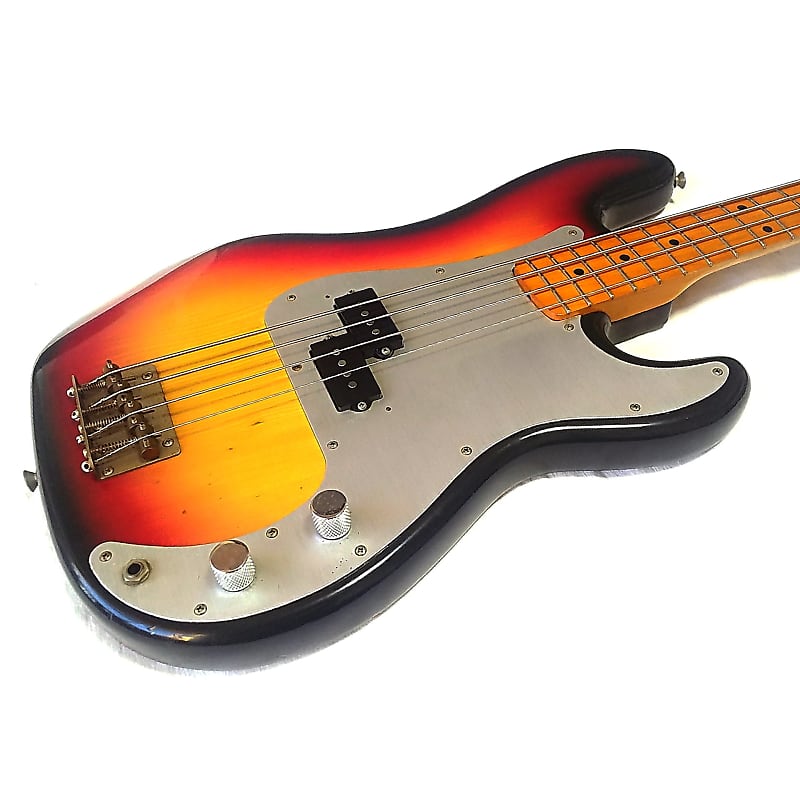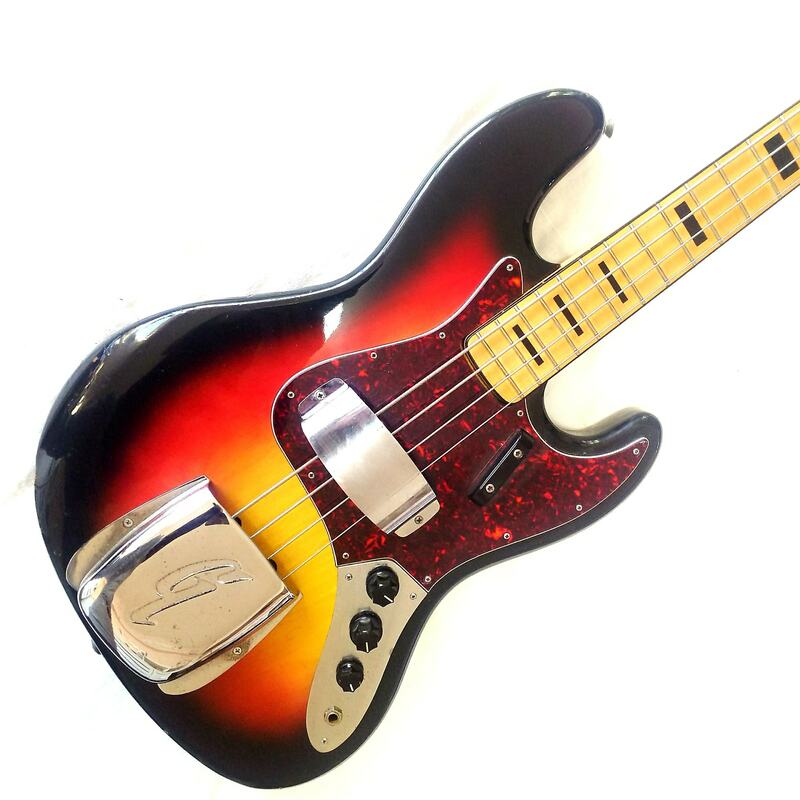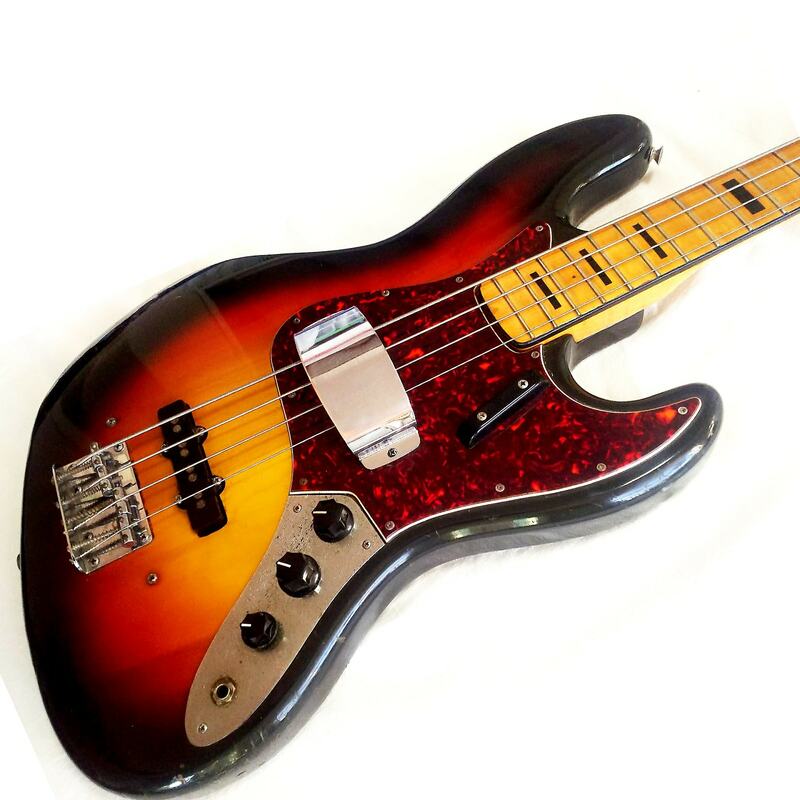Many people ask me about Greco and other vintage MIJ brandsa, so I am writing here what I understand to be the basic outline of the brand and it's upsurge in the 70's and 80's. My information may not be 100% accurate, but generally I understand this to be true.
I hope you may find this interesting / insightful! Thanks for reading!
The MMIG / Matsumoku Years: Circa 1971 - 1976
Early 70's builds, made by Matsumoto Musical Instrument Group, which was a loose network of builders including small Mom & Pop shops that would handle things such as building necks, fretting and assembly, had the JB380, JB450, JB500, JB600, PB450, PB500, PB600 and PB750 it it's line up.
Matsumoku furniture makers were also part of this group and had started a musical instrument production wing which ran out of their furniture factory.
Greco put out cheap ply bodies such as the JB380 with the three pc necks and the Maxon humbuckers using the MMIG network, and the PB500 or the JB500 (and higher models) which was multi part sen, were all matsumoku made, hence better fitting neck pockets than the cheaper (MMIG) builds
Matsumoku handled most of the higher end builds at this time such as the 1974 PB750 Yamauchi Signature PJ bass, which was their most expensive model then, below that was the PB600 which had a three piece sen body and the logo embossed on the tuners. At this point the head stock decal on the 500 and above simply said GRECO ELECTRIC BASS.
The Fujigen Years
In 1976 Fujigen was starting to establish itself as an instrument maker (not just a string manufacturer), and Matsumoku instrument manufacture was absorbed or merged with it and consequently Fujigen started officially making Greco in 1977. As a result any of the post '77 builds tend to be of a similar or higher quality and consistency to the higher grade matsumoku builds of the early 70's.
It was at this point that marketing execs decided to give the basses weird names such as spacy sound, super real, mercury and the like in a bid to sound cool and hip or add a bit of mystique to the brand, as well as to better distinguish the models from one another.
These names actually didn't really mean much at all, however, the Mercury basses seemed to be from the 500 (50000JPY) range and up to the 700 (70000JPY) where as the spacy sound was a little lower grade and later model (maybe from 1981 or so).
As I said, the names actually mean very little because in the Mercury range, it's the model number that gives it away. The higher the number the better the spec.
The PB700 for example has very high grade hardware and nicer body material compared to the PB500 which was mostly made in alder, not Sen, then the PB600 is in between with prettier grained sen body material but moderate hardware.
The Super real PB800 and JB800 were the highest spec lawsuit models costing 80000JPY. Those had two piece bodies no three piece like the 700 and below, and had pearl dot inlays on the Jazz bass not blocks.
In a nut shell and as an overview.
Matsumoku era: 1971 - 1976
Models: JB380 JB450 JB500 JB550 JB600 PB450 PB500 PB600 PB750
Fujigen Era 1977 onward
JB500 PB500 JB600 PB600 PB700 PB800 JB800
PB500 - 700 were called Mercury Bass till about 1981.
In 81 they called them as follows.
PB450 Spacy sound PB500 Mercury Bass PB600 Super Sound
PB700 Super Real
They also started building the high grade neck through basses in about 1978 with the GOB series GOB650 to GOB1200 the highest grade one, which are of a similar build quality to ken smith or something! Insane instruments!
Again this information is not cited to be 100% accurate and I don't pretend to know everything about the history of Greco, but this is what I understand to be the case. Either way, Greco is a brand that stood the test of time and is still going strong in Japan today!
I hope you may find this interesting / insightful! Thanks for reading!
The MMIG / Matsumoku Years: Circa 1971 - 1976
Early 70's builds, made by Matsumoto Musical Instrument Group, which was a loose network of builders including small Mom & Pop shops that would handle things such as building necks, fretting and assembly, had the JB380, JB450, JB500, JB600, PB450, PB500, PB600 and PB750 it it's line up.
Matsumoku furniture makers were also part of this group and had started a musical instrument production wing which ran out of their furniture factory.
Greco put out cheap ply bodies such as the JB380 with the three pc necks and the Maxon humbuckers using the MMIG network, and the PB500 or the JB500 (and higher models) which was multi part sen, were all matsumoku made, hence better fitting neck pockets than the cheaper (MMIG) builds
Matsumoku handled most of the higher end builds at this time such as the 1974 PB750 Yamauchi Signature PJ bass, which was their most expensive model then, below that was the PB600 which had a three piece sen body and the logo embossed on the tuners. At this point the head stock decal on the 500 and above simply said GRECO ELECTRIC BASS.
The Fujigen Years
In 1976 Fujigen was starting to establish itself as an instrument maker (not just a string manufacturer), and Matsumoku instrument manufacture was absorbed or merged with it and consequently Fujigen started officially making Greco in 1977. As a result any of the post '77 builds tend to be of a similar or higher quality and consistency to the higher grade matsumoku builds of the early 70's.
It was at this point that marketing execs decided to give the basses weird names such as spacy sound, super real, mercury and the like in a bid to sound cool and hip or add a bit of mystique to the brand, as well as to better distinguish the models from one another.
These names actually didn't really mean much at all, however, the Mercury basses seemed to be from the 500 (50000JPY) range and up to the 700 (70000JPY) where as the spacy sound was a little lower grade and later model (maybe from 1981 or so).
As I said, the names actually mean very little because in the Mercury range, it's the model number that gives it away. The higher the number the better the spec.
The PB700 for example has very high grade hardware and nicer body material compared to the PB500 which was mostly made in alder, not Sen, then the PB600 is in between with prettier grained sen body material but moderate hardware.
The Super real PB800 and JB800 were the highest spec lawsuit models costing 80000JPY. Those had two piece bodies no three piece like the 700 and below, and had pearl dot inlays on the Jazz bass not blocks.
In a nut shell and as an overview.
Matsumoku era: 1971 - 1976
Models: JB380 JB450 JB500 JB550 JB600 PB450 PB500 PB600 PB750
Fujigen Era 1977 onward
JB500 PB500 JB600 PB600 PB700 PB800 JB800
PB500 - 700 were called Mercury Bass till about 1981.
In 81 they called them as follows.
PB450 Spacy sound PB500 Mercury Bass PB600 Super Sound
PB700 Super Real
They also started building the high grade neck through basses in about 1978 with the GOB series GOB650 to GOB1200 the highest grade one, which are of a similar build quality to ken smith or something! Insane instruments!
Again this information is not cited to be 100% accurate and I don't pretend to know everything about the history of Greco, but this is what I understand to be the case. Either way, Greco is a brand that stood the test of time and is still going strong in Japan today!






 RSS Feed
RSS Feed